We are Shaping the Future! Showcasing Success Stories as We Innovate for a Sustainable Tomorrow
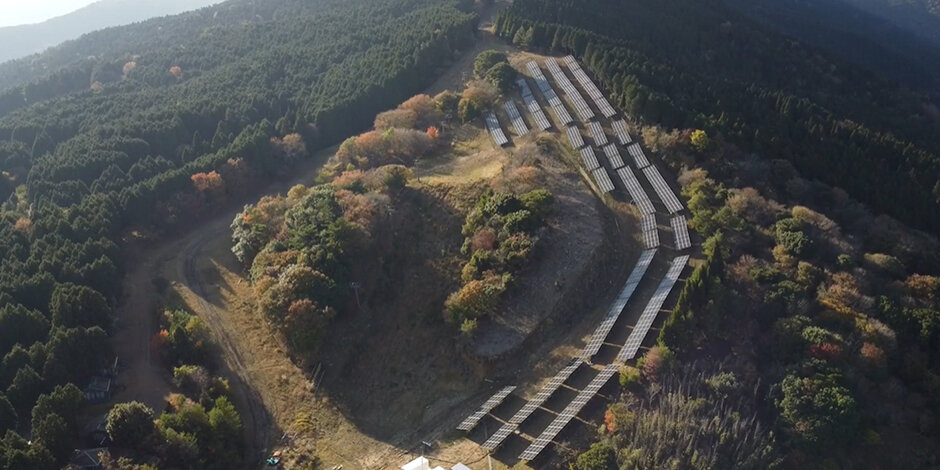
As initiatives aimed at achieving carbon neutrality spread to combat global warming, OMRON announced its medium- to long-term environmental target, OMRON Carbon Zero, with the goal of reducing Scope 1 and 2*1 greenhouse gas (GHG) emissions to zero by 2050. To make this happen, we have set a target of reducing GHG emissions from OMRON by 53% by FY2024 (vs. FY2016) as we work to achieve zero GHG emissions at all 76 sites in Japan. In the process of working toward this ambitious target, OMRON is seeking to introduce renewable energy by utilizing a brand-new scheme.
*1 Scope 1: Direct GHG emissions from the company's use of fuels; Scope 2: Indirect GHG emissions from the use of electricity/heat purchased by the company; Scope 3: GHG emissions from the company's value chain
ŃĆĆ
To reduce GHG emissions and achieve Carbon Zero, it is vital to introduce electricity generated from renewable energy sources at solar power plants. The reality, however, is that it is difficult to allow sufficient space for such a facility at offices in urban areas, leaving us no choice but to purchase electricity from electric power companies. Meanwhile, if we turn our eyes to more rural areas, we can still find spaces large enough to install power generation facilities. To narrow this gap, OMRON has come up with the idea of supplying electricity from renewable energy sources from a remote location via "self-consignment*2," a system that allows companies to transmit electricity generated at their own facility at a remote location to their own factories and offices through the transmission/distribution network. By taking advantage of this scheme, we have embarked on a new attempt for Carbon Zero, i.e., supplying electricity from renewable energy sources at our power generation facility to our R&D center, which is 100 km away from the facility. Propelling this project was OMRON FIELD ENGINEERING Co., Ltd. ("OFE"), a member of the OMRON Group that offers engineering solutions for social systems.
*2 Transmission of electricity generated at a private power generation facility to its own business site in a different location through the electrical grid. When it is difficult to secure space for a power generation facility, say, on rooftops or in open areas, within its own premises, this scheme gives access to electricity generated by a facility of a Group company or a power generation facility at a remote location.
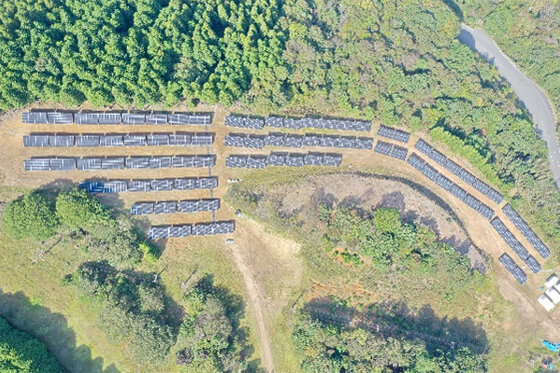 Solar Power Plant in Miyazu City, Kyoto Prefecture
Solar Power Plant in Miyazu City, Kyoto PrefectureŃĆĆ
The first thing OFE did was to find a place where they could build a power generation facility. They needed to undergo all sorts of coordination work: verifying if the place was suited for constructing such a facility and if it made business sense and then negotiating with multiple landowners. The prime candidate ended up being Kyoto Prefecture's Miyazu City, which signed a comprehensive collaboration agreement with OMRON in 2017 to revitalize their community by introducing renewable energy. They had a 10,000-square-meter vacant lot that was formerly used as a ski slope, which caught OFE's attention. An increasingly large portion of Miyazu is being depopulated, and so one of the most imperative issues is how they can utilize idle land that has been left unmanaged and is steadily becoming dilapidated. As they solicited cooperation from local residents, OFE carefully narrowed down a list of candidates and worked closely with their host city in a project to revive deserted idle land as a seat of a facility generating electricity from renewable energy sources.
"There has been growing interest in renewable energy, but I had no idea that electricity generated here in Miyazu City could be transmitted to urban areas, where electric power is in high demand. As this project also allows us to use idle land by building a power generation system there, I expect that it will revitalize our local economy," commented Chairman Keiji Sekino of the Kyoto Prefecture Miyazu City Kamimiyazu Financial Wards Management Association on this project by OMRON.
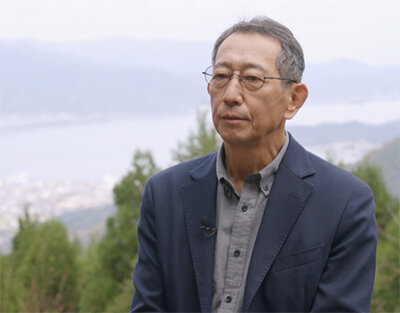 Keiji Sekino, Chairman, Kyoto Prefecture Miyazu City Kamimiyazu Financial Wards Management Association
Keiji Sekino, Chairman, Kyoto Prefecture Miyazu City Kamimiyazu Financial Wards Management AssociationŃĆĆ
The biggest challenge for enabling self-consignment is "keeping energy production equal with energy demand (balancing)*3." To stabilize power transmission and distribution networks, self-consignment service providers are required to submit their prediction of the power generation volume and consumption volume to electric power companies beforehand and ensure that the planned value coincides with the actual value, a process demanding highly precise energy management. To achieve this precise control, OFE decided to introduce an original energy management system (EMS) using large storage batteries. The EMS predicts the power generation volume with a unique algorithm that incorporates meteorological data from the Japan Meteorological Agency and private weather information services and past power generation data, as well as know-how gained from the experience of working with over 2,000 power generation facilities. By controlling energy based on these predictions, OFE developed a system that minimizes errors between planned and actual values by charging storage batteries when the power generation volume exceeds the planned value and discharging when it is below.
A member of the EMS development team, Masaru Kajiwara described the morale of the team: "We've just begun operating the system. In the mountainous area where we built a power generation facility for this project, the weather is so changeable that it is quite difficult to make forecasts. We will keep gathering operational data for analysis to make energy control more precise until we can say we have built a system that constantly achieves optimal control no matter what environment it is installed in."
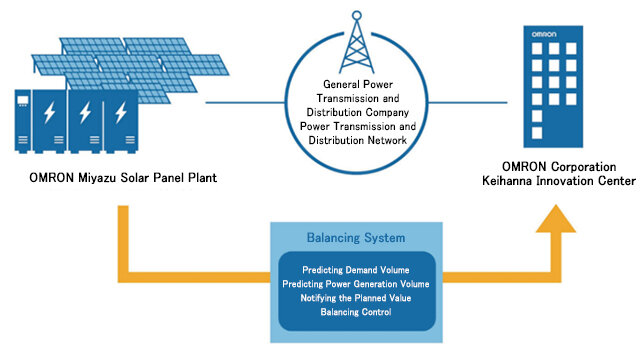 Self-Consignment System Connecting Miyazu Solar Power Generation Facility and OMRON's Business Site
Self-Consignment System Connecting Miyazu Solar Power Generation Facility and OMRON's Business Site*3 A system that obliges power producers and suppliers (PPSs) to balance the actual supply-demand and the planned value without any discrepancies by predicting the electricity demand volume and the power generation volume every thirty minutes. Imbalances will destabilize frequency, resulting in lower quality of electricity and major blackouts.
ŃĆĆ
In January 2023, OFE realized the supply of electricity from renewable energy sources from a remote location via self-consignment. For this to happen, OFE offered an end-to-end solution, from finding a place to install a power generation facility, to designing and installing the facility and adjusting the power transmission and distribution network. Now that the power generation facility in Miyazu City is connected with OMRON's business site, it is possible to supply approximately 670 MWh of electricity per annum, which accounts for around 30% of the electric power consumed at the site.
Recent years have seen many Japanese companies introducing facilities generating electricity from renewable energy sources as they endeavor to achieve carbon neutrality by 2050, giving rise to the expectation for the use of a self-consignment scheme. "Using electricity from renewable energy sources, we develop new products, which then go to solve more social issues--This is the sort of circulatory model we wish to create," Noriaki Hayakawa, a chief promoter of the project, shared his growing aspirations. "Japan has such a small land area and is quite mountainous, making it increasingly difficult to find a place optimal for introducing a solar power system. Against this backdrop, I believe that a self-consignment model like this is a socially significant way to procure electricity from renewable energy sources."
In its long-term vision, "Shaping the Future 2030," OMRON has identified three social issues that it should address through business, namely, "achievement of carbon neutrality," "realization of a digital society," and "extension of healthy life expectancies," and is working on the three to ensure sustainable development of society. Spreading renewable energy by utilizing the self-consignment system is an example of its initiative designed to "achieve carbon neutrality" in harmony with a natural society. Going forward, OMRON will remain committed to the realization of a sustainable society through collaboration with diverse partners who share the same vision in seeking solutions to social issues.
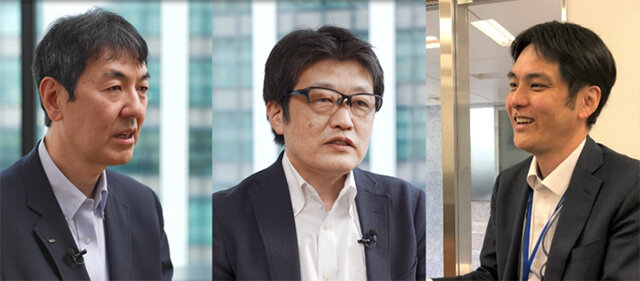 Left: Atsushi Sasawaki, Executive Officer, Energy Management HQ, OFE
Left: Atsushi Sasawaki, Executive Officer, Energy Management HQ, OFE